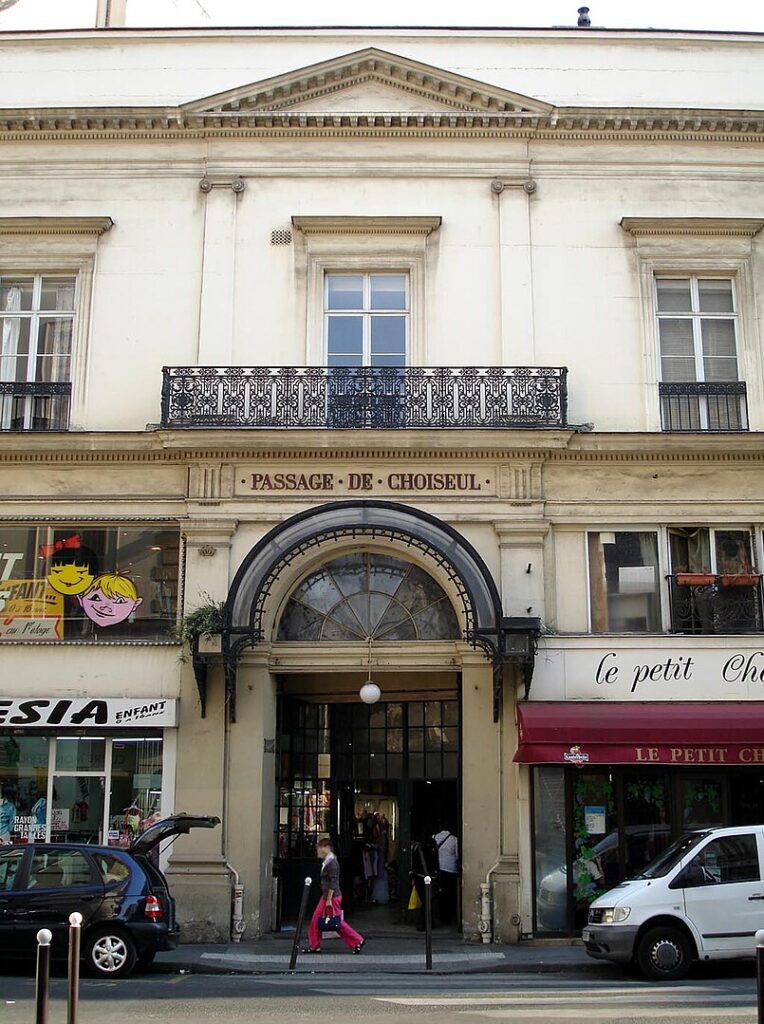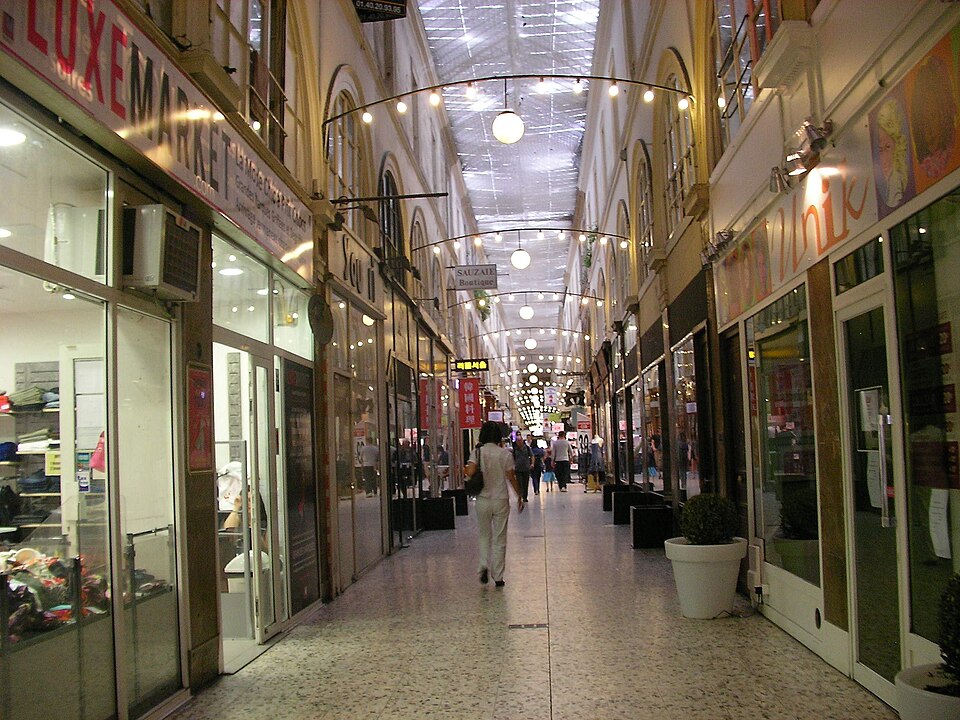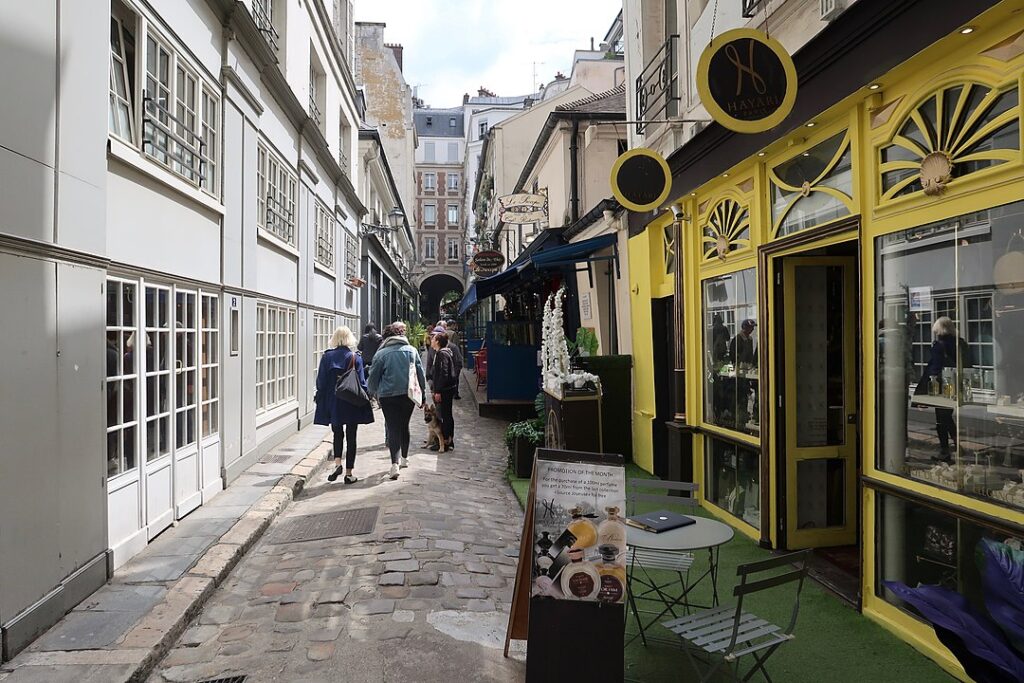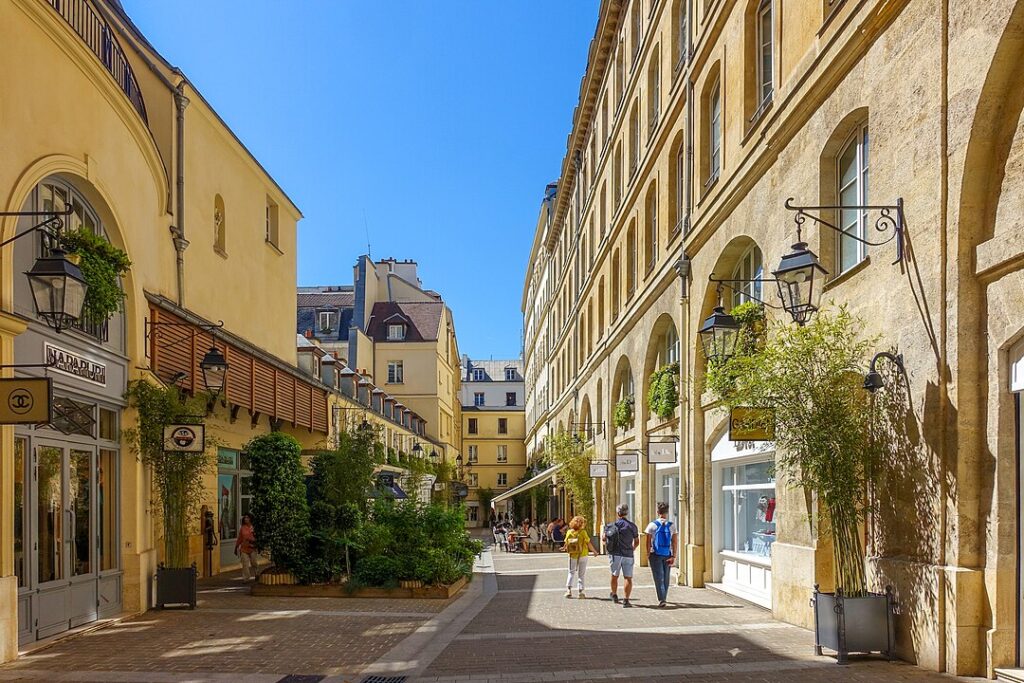10 Greatest Covered Passages in Paris
Passage Choiseul (1829)

Passage Choiseul, built in 1826-1827 in the 2nd arrondissement, is 190 meters long – it’s the longest covered passage in Paris. It was designed by architects François Mazois and Antoine Tavernier. It was once home to writer Louis-Ferdinand Céline, who referenced it in his novels.
The passage fell into disrepair but revived in the 1970s when Kenzo opened a boutique. Now, it hosts restaurants, shops, and art galleries and the Théâtre des Bouffes-Parisiens. It was restored in 2012 and is a registered historic monument.

Cour du Commerce-Saint-André (1776)

Cour du Commerce-Saint-André in the 6th arrondissement dates back to the 1730s. It provides a history path between Rue de l’Ancienne-Comédie and Rue Saint-André-des-Arts. Expanded in 1776 and later reconstructed in 1823, it hosts remnants of the Philippe Auguste city wall.
The passage was partially lost during the construction of Boulevard Saint-Germain in the 19th century. Notable sites include Le Procope, Paris’s oldest café and historical hangout of revolutionary figures like Marat and Guillotin.
Cité Berryer (Village Royal) (1745)

Cité Berryer, in the 8th arrondissement, runs between 25 Rue Royale and 24 Rue Boissy-d’Anglas. Originally called “Passage du marché d’Aguesseau,” it started as a modest market space in 1723 before moving to its current site in 1745.
This passage contrasts sharply with the upscale Rue Royale due to its more modest, hidden character. While surrounded by luxury boutiques and high-end restaurants, Cité Berryer retains a quieter, old-world charm, reflecting a less polished side of Paris’s history.
